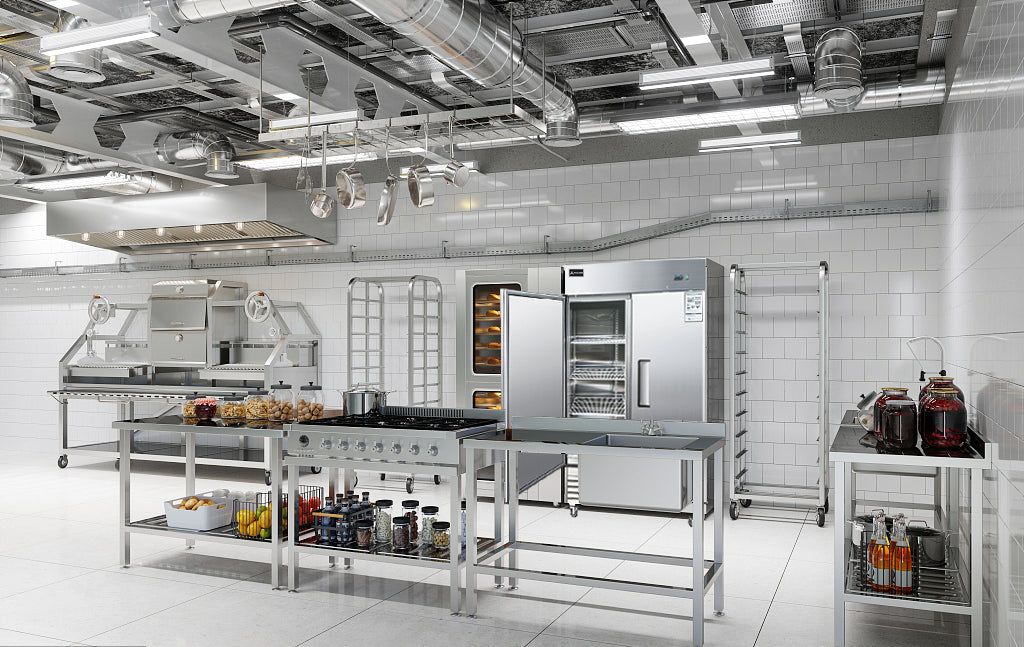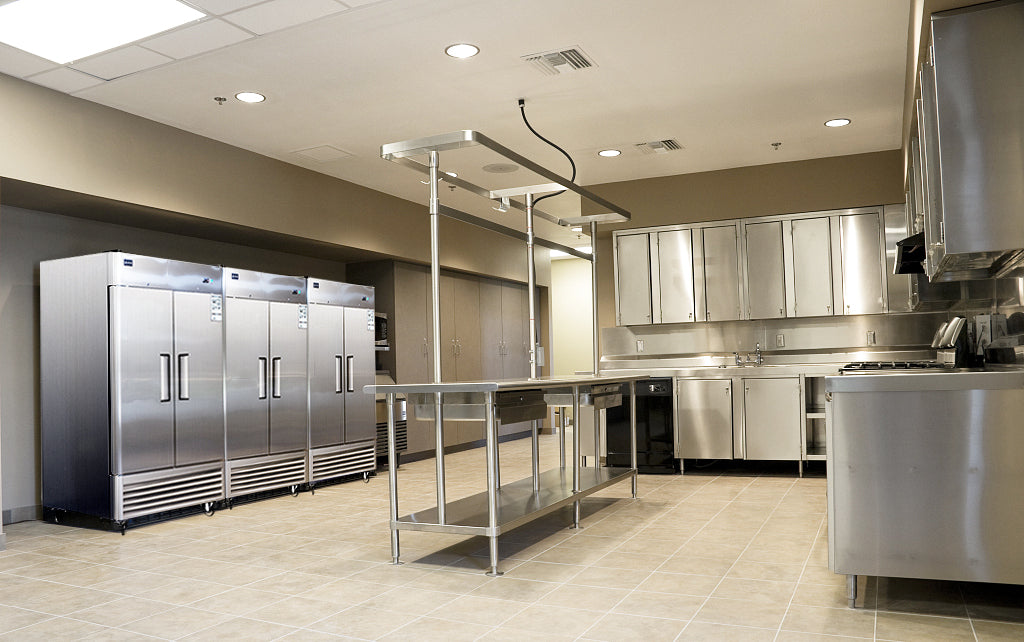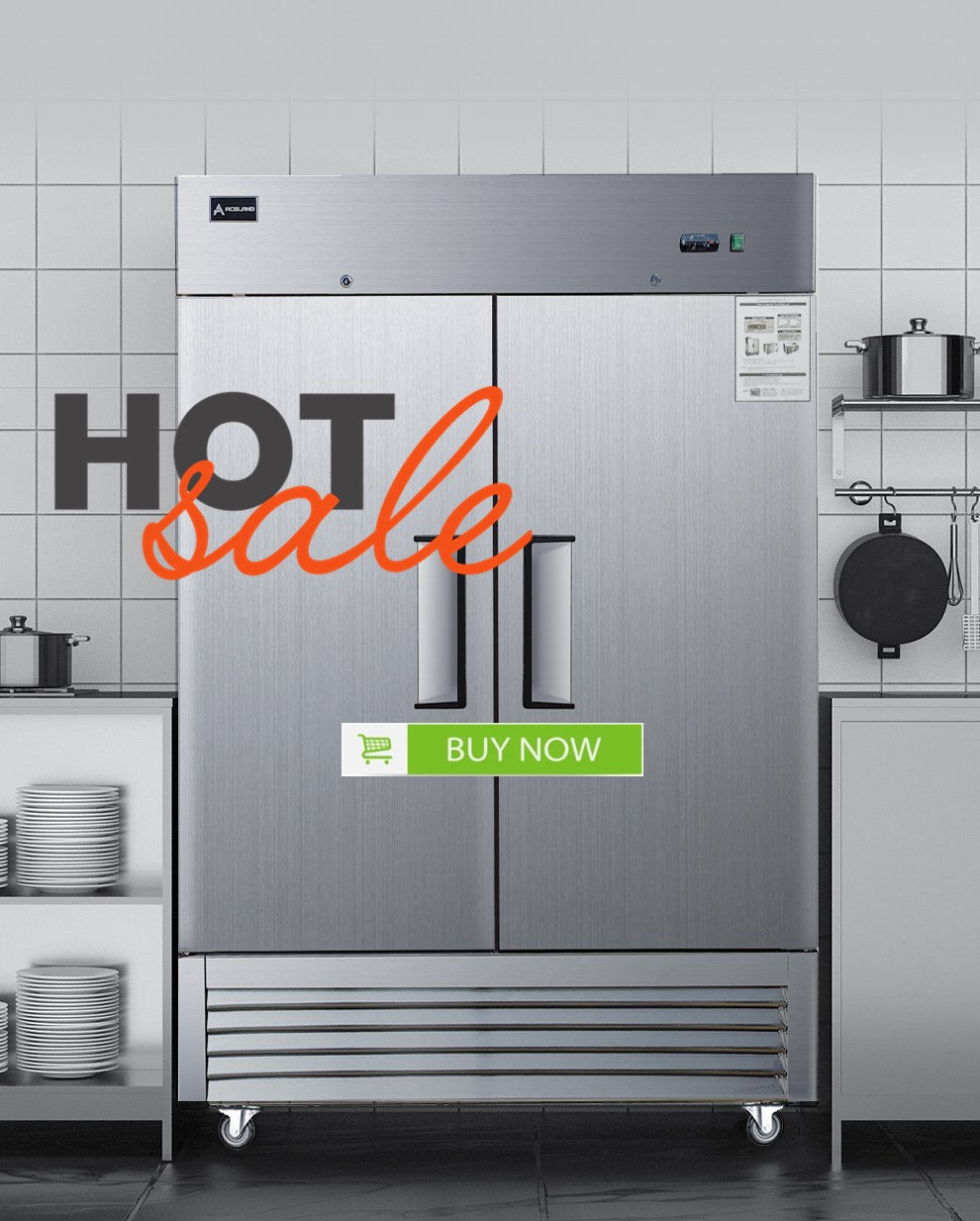Restaurant Equipment Cleaning & Maintenance Tips from Aceland Restaurant Supplies & Equipment Store
Running a restaurant involves more than just preparing delicious dishes; it also requires proper maintenance and care of your kitchen equipment. Regular attention to your equipment ensures smooth kitchen operations, extends the lifespan of your appliances, and upholds the quality of your culinary creations. In this comprehensive guide, we present a twelve-step approach to effectively maintain and care for your restaurant equipment.

1. Regular Cleaning
Make it a habit to clean your equipment after each use. This simple yet essential step prevents the buildup of food residues, grease, and grime, which can lead to malfunctions and potential health code violations. Ensure that both visible and hidden parts are thoroughly cleaned.
2. Follow Manufacturer’s Guidelines
Each piece of equipment is unique, so it’s crucial to consult the manufacturer’s manual for specific maintenance instructions. These guidelines are designed to ensure optimal performance and maximize the lifespan of your equipment, preventing unnecessary wear and tear.
3. Scheduled Maintenance
Create a detailed maintenance schedule outlining when each piece of equipment should be inspected, cleaned, and serviced. This proactive approach helps prevent unexpected breakdowns during busy service hours, minimizing disruptions to your operations.
4. Staff Training
Ensure your kitchen staff is well-trained on proper equipment usage, cleaning procedures, and maintenance practices. When everyone is knowledgeable, the likelihood of misuse or damage decreases significantly.
5. Wear and Tear Inspections
Regularly inspect your equipment for signs of wear and tear. Check for issues like frayed cords, loose handles, or worn-out seals, and address them promptly to ensure the safety of both staff and patrons.
6. Lubrication and Tightening
Equipment with moving parts, such as grinders or slicers, requires periodic lubrication and tightening. This helps prevent unnecessary friction and reduces the risk of premature breakdowns.
7. Calibrations and Adjustments
Calibrating appliances like ovens and thermometers is crucial to maintaining accurate readings. Keep calibration tools on hand and routinely check your equipment to ensure consistent quality in your culinary creations.
8. Deep Cleaning Sessions
In addition to daily cleaning, schedule monthly deep cleaning sessions for your equipment. Disassemble parts if needed, and focus on hard-to-reach areas, including ventilation systems, to prevent the buildup of grime and grease.
9. Grease Trap Maintenance
For restaurants with grills and fryers, proper grease trap maintenance is vital. Regularly clean and empty grease traps to prevent clogs, foul odors, and fire hazards.
10. Refrigeration Care
To maintain optimal cooling efficiency, keep refrigerator coils clean and free from dust. Regularly monitor refrigeration temperatures and defrost units as needed to prevent frost buildup that can impair performance.
11. Electrical Safety Checks
Inspect cords and plugs regularly for signs of damage, such as fraying or exposed wires. Faulty electrical connections can pose fire risks and disrupt kitchen operations, making regular checks essential.
12. Professional Servicing
While in-house maintenance is important, some repairs require professional expertise. Establish relationships with reputable repair services to address complex issues, ensuring that your equipment stays in peak condition.

In conclusion, maintaining and caring for your restaurant equipment is an essential aspect of running a successful culinary business. By following these twelve steps, you can ensure the longevity, safety, and efficiency of your equipment. A well-maintained kitchen creates the foundation for consistently high-quality dishes and a thriving restaurant.
























